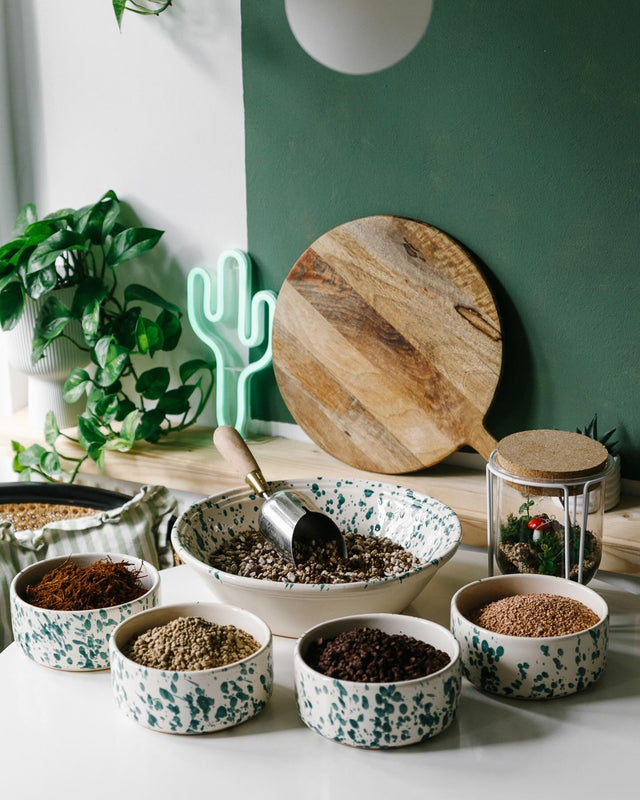
As technology advances, LED lights are becoming an increasingly popular choice for indoor gardening due to their ability to emit specific ranges of wavelengths that can greatly benefit plant growth. The range of light within the red (620-750 nm) and blue (400-520 nm) spectrums are often targeted to promote different stages of growth.
Blue Light
By regulating a hormone called auxin, blue light helps to control excessive stem elongation and stretching in plants. Auxin promotes cell elongation and division, which allows plants to grow taller. However, too much auxin can lead to weak and spindly plants. That's where blue light comes in, triggering the production of cytokinin. This hormone works in opposition to auxin, promoting cell differentiation and slowing down cell elongation. By doing so, cytokinin helps to balance the growth of the plant and prevent excessive stretching, leading to stronger, bushier growth.But that's not all, Blue light also helps to promote phototropism, which is the growth of a plant towards or away from light. This natural response helps to prevent leggy growth and promotes a more symmetrical shape. Plus, blue light is also responsible for stimulating the production of antioxidants in plants. These compounds protect plants from damage caused by environmental stressors like UV radiation, high temperatures, and pollution.
All of these benefits make blue light particularly beneficial during the vegetative stage of growth. It helps to promote strong stem and leaf growth, making it ideal for seedlings and young plants. So, if you're looking to give your plants a boost, consider adding a bit of blue light.
Red Light
Red light, specifically the range of 660-730 nm, is the most efficient wavelength for photosynthesis. Red light plays a big role in promoting flowering and fruiting in plants by promoting the production of the hormone called phytochrome, which regulates the plant's reproductive development. Phytochrome helps to regulate the timing of flowering and the formation of fruits and controls the growth of stems and leaves. As a grower, you may be tempted to use only red light when growing certain plants, as it can promote leafy growth.
However, it's important to understand that using only red light can make a plant lose too much water and grow improperly. This can lead to stretching, excessive height, or leaf blisters, a common issue seen in tomatoes grown under red light only. When exposed to only red light, plants may attempt to flower prematurely in a last-ditch effort to reproduce before ultimately withering away. That's why it's essential to offer a well-balanced spectrum of light, ensuring the optimal growth, health, and development of your cherished plants. As a content writer and plant lover, I cannot emphasise enough the importance of giving your indoor garden the full range of light it needs to truly flourish.
Do plants need any Green Light?
In the past many grow lights cut out green light completley (often giving that purple hue.) This is due to green light being poorly absorbed, and being least effective for photosynthesis.While blue and red lights are often the primary focus for plant growth and are most efficient wavelengths for photosynthesis, green light also plays a crucial role in the process. Green light (500-570 nm) penetrates deeper into the plant canopy compared to red and blue light, which can enhance photosynthesis in the lower leaves. This deeper penetration helps to ensure that all parts of the plant receive adequate light, promoting more uniform growth and maximizing photosynthetic efficiency.
Moreover, green light is important for regulating certain plant processes. It contributes to the overall energy balance within the plant and helps to optimise light utilization. Green light also influences the plant's circadian rhythms, affecting processes like stomatal opening and closing, which are essential for gas exchange and water regulation.
Therefore, incorporating green light into your grow light spectrum can improve the overall health and productivity of your plants.
Full Spectrum Lights
Full spectrum grow lights are a popular choice among growers and indoor gardeners, as they emit a range of colours within the PAR (photosynthetically active radiation) range and look more natural so can fit in well in a living environment.
These lamps can be classified as either warm (less than 4,500 Kelvin) or cool (More than 4,500 Kelvin), based on the balance of colours they emit. Warm full-spectrum lamps emit less blue and green light, and more red and yellow light, while cool full-spectrum lamps emit less red and yellow light and more blue and green light.
Regardless of the type of lamp you choose, it is essential to ensure that it provides an adequate range of PAR and intensity of light for the type and quantity of plants you intend to grow.
💡Key Takeaway
Choosing the right grow light spectrum is crucial for the optimal growth and health of your indoor plants. Blue light is essential for vegetative growth and strong stems, red light promotes flowering and fruiting, and green light ensures deeper penetration and overall energy balance. Full spectrum lights, like the Pianta grow light, can provide the most comprehensive benefits, ensuring your plants receive the full range of light they need to thrive. Our recommendation for indoor gardeners is to use a full spectrum light to support plant growth at all stages of their life cycle. Consider the specific needs of your plants and the stage of growth they are in to make the best lighting choices for a flourishing indoor garden.
Find similar articles:
Lighting PrinciplesMentioned in this article
More stories
